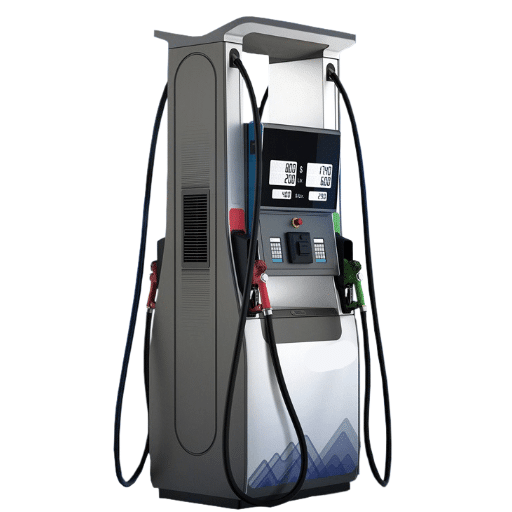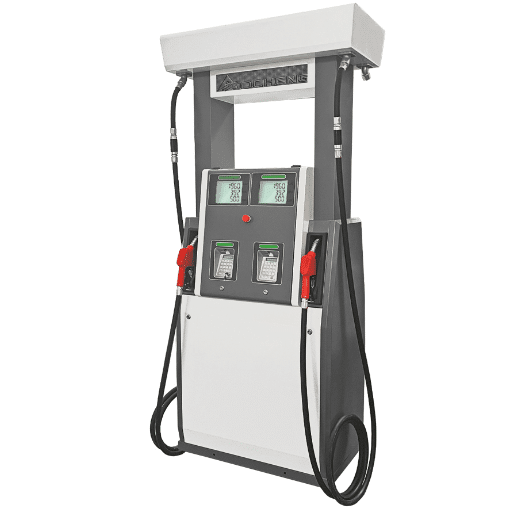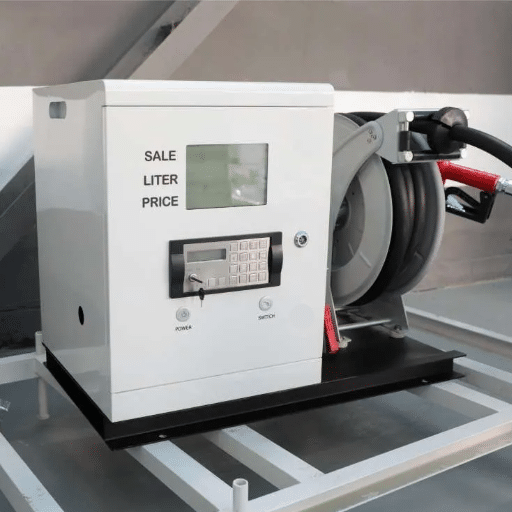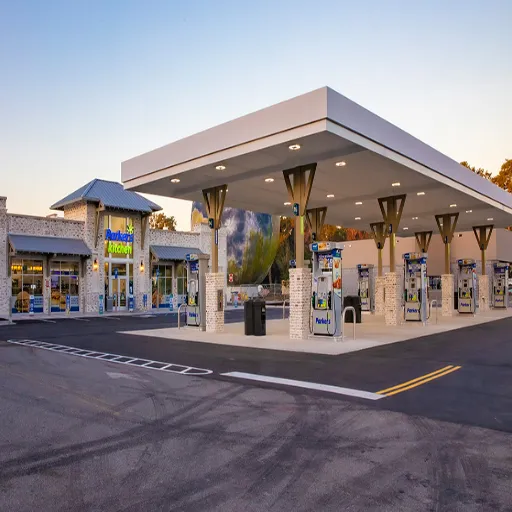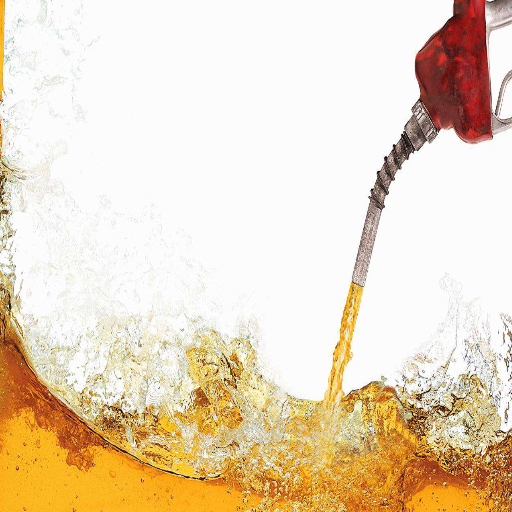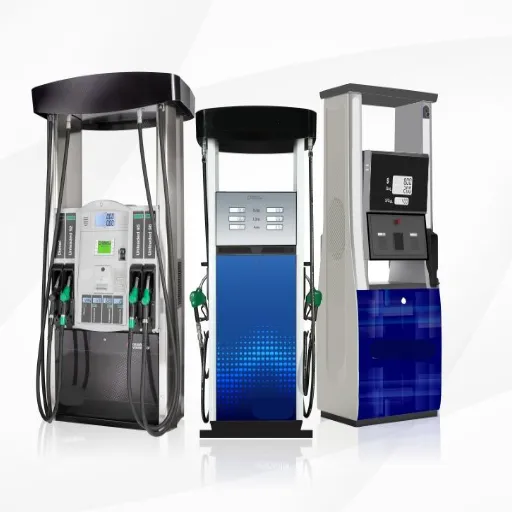Gasoline is among the most used products globally and serves as the energy source for the majority of people and things like global supply chains. Still, even though gasoline is essential in everyday life, the majority of consumers do not have a clear grasp of the economic aspect of gasoline, particularly the gas station’s profit margin on each gallon of gas sold. The article has the intention to simplify the complex financial relationships in the gas station, revealing the precise amount of the retailer’s income that remains after the fluctuating oil prices, taxes, and operating expenses have all been factored in, and the competition in the market is considered. By the time you finish reading this article, you will have a much more comprehensive view of the challenges and the realities that gas station owners have to face in a situation where even a slight change in profit could have considerable consequences.
Understanding Gas Station Profit Margins

The profit margins of gas stations are very low, and most of them can only make a few cents on each gallon of gasoline sold. As per statistics, the net profit of retailers in general is around 2-10 cents per gallon of gasoline sold when the expenses for wholesale fuel, credit card fees, overhead, and transportation are taken into account. A gas station’s revenue, however, is mostly generated through convenience store sales, which are the areas with much higher profit margins. The dependence on non-fuel income reflects the difficulties of competing in an industry where prices and fuel competition greatly affect profits.
Average Profit Per Gallon of Gasoline
What Is the Average Profit Margin for Gas Stations?
The profit margin of gas stations on fuel sales is basically very thin on average, and it is usually from 1.5% to 3% per gallon sold. The expenses that come with taxes, fuel purchase costs, credit card fees, and operational costs have already been taken into account. The margin indeed appears small, but it should be considered that the gas stations’ overall profitability is largely based on non-fuel sales, especially convenience store items, car washes, and maintenance services. The profit of these areas is sometimes up to 30%-50% which significantly enhances the station’s financial performance. Thus, the profitability of a gas station depends more on the different income streams and managing costs efficiently than on fuel prices alone.
| Revenue Source | Profit Margin | Importance Level |
|---|---|---|
| Fuel Sales | 1.5% – 3% | High Volume, Low Margin |
| Convenience Store Items | 30% – 50% | Critical for Profitability |
| Car Washes | 30% – 50% | Additional Revenue Stream |
| Maintenance Services | 30% – 50% | Value-Added Services |
Factors Influencing Profit Margins
Through the focus on these vital points, gas station operators can construct a strong business model that is able to prosper even in changing market conditions.
Fuel Sales and Volume
Although gas station revenue is mainly made up of fuel sales, these sales do not yield high profit margins, which range from 1% to 3% on average per gallon sold. Still, the effect of bulk fuel sales on profitability is indirect but positive; it leads to increased customer visits and, thus, more sales of non-fuel items, which is the main reason for increased profitability.
Non-Fuel Revenue Streams
The sales of the convenience store, washing car service, and the quick-service food options have a very high profit margin, ranging between 30% and 50%. The marketing strategies being very innovative and product offerings being done regularly, these categories can be further highlighted, and thus, maximum revenue is obtained in these areas, which contribute a lot to overall profitability.
Operational Efficiency
Cost management is critical for the determination of the company’s profit. Energy costs, labor expenses, and inventory turnover are among the most important factors that directly influence margins. The installation of energy-efficient technologies and the use of advanced inventory management systems can lead to a remarkable increase in operational efficiency.
Location and Demographics
The station’s location is a very significant factor in its overall profitability. Urban centers where more people and traffic are present and where the demographics are right for the sellers to provide them with convenience tend to give more return. Moreover, just being near the highways or being in an area where the population is less can be a competitive advantage.
Market Competition and Pricing Strategies
Very strong local competition can lead to fuel prices getting flattened, thereby making it mandatory to use strategic pricing techniques. Gas stations can increase their profitability by the use of loyalty programs, allowing the bundling of deals, and keeping prices competitive without killing the most basic profits.
Comparing Gasoline Sales to Non-Fuel Sales
Gasoline sales are often the primary reason customers visit gas stations, but at the same time, their profit margins are usually very low owing to the fierce competition and changing crude oil prices. However, non-fuel sales such as convenience store items, car washes, and food services bring in a much larger profit, which in turn significantly adds to the overall profit of the business. Research shows that although the sale of fuel generates most of the revenue, non-fuel items can contribute as much as 30% of total profit.
A thorough comparison shows that the buying behavior of customers often associates gas purchase with visits to the convenience store, thus giving room for cross-selling. The strategic positioning of high-margin products and the process of encouraging in-store purchases through fuel discounts or loyalty programs can significantly increase non-fuel sales. The dual-revenue approach not only helps the operators to cope with the volatility of fuel margins but also to establish a more diverse and sustainable business model.
Revenue Sources for Gas Stations

Gas stations that have multiple revenue sources can avoid the risk of reliance on fuel margins and hence develop a business model that is more resistant to market changes.
Primary Revenue Streams:
- Fuel Sales: Gasoline and diesel have not only dominated the sales but also have become the main source of revenue for gas stations. Even so, the profit margins on fuel may be quite meager, but the high volume of sales does ensure a constant flow of income.
- Convenience Store Sales: The non-fuel sales, i.e., the sales of snacks, drinks, and essential items, add a lot to a gas station’s total revenue. Introducing a complete range of high-margin products makes it possible for positioning profits to rise.
- Car Services: Apart from the fuel business, a large number of gas stations also make money by offering car washes, oil changes, and minor repairs. These services not only increase the customer base but also make it possible to earn more from the same customer.
- Loyalty and Promotions: Implementing loyalty programs or discount promotions on fuel linked to in-store purchases is a way of drawing customers to gas stations that benefits both fuel and non-fuel sales.
Fuel Sales and Their Impact on Overall Revenue
In most cases, fuel sales are the main source of revenue for gas stations, and they also constitute a large part of their income. Nevertheless, the profits earned on fuel are quite low and range from 2% to 5% per gallon on average after payment of operation costs like freight, credit card fees, and tax. Thus, gas stations need to come up with new ways to increase their overall profits due to the reduced margins.
One of the major ways in which fuel sales influence the total revenue is by the possibility of increasing the number of customers visiting the store. Customers who come to refill their tanks are more probably to buy convenience store items with high profit margins like snacks, drinks, and automotive supplies, thus it would be a cumulative effect. Also, ancillary services such as car washes, air pumps, or minor vehicle repairs depend on fuel sales to have a self-sustaining customer base.
Moreover, factors like changing prices of crude oil, local competition, and seasonal demand fluctuations in the market have a direct effect on the earnings from gas sales. Although quantity is an important factor, operating efficiently to take care of overhead costs and the use of loyalty programs associated with fuel discounts are indispensable for keeping competitive prices and maximizing profit. By seeing fuel as a core product and a foot traffic driver at the same time, gas stations can set up a revenue model that is balanced, and hence, the high-margin offerings will cover the narrow fuel margins.
Convenience Store Sales: A Significant Revenue Stream
The profitability of gas stations heavily relies on convenience store sales, which frequently yield higher margins than fuel sales. The stores make the most of consumer convenience and offer a variety of high-margin products such as snacks, drinks, and prepared foods. Industry analyses show that customer purchasing behavior is often similar to impulse buys; hence, strategic product placement and promotions are crucial. Moreover, providing more services like coffee programs, grab-and-go meals, and exclusive products helps to create a unique identity for convenience stores as opposed to their competitors. In addition, using advanced inventory management systems and data analytics, the operators can closely monitor consumer trends, thus optimizing stocking levels and minimizing waste. Through the use of loyalty programs and personalized promotions, gas stations can not only boost in-store sales but also promote fuel purchases, thus creating a synergistic revenue cycle that enhances overall profitability to the maximum.
Additional Revenue from Non-Fuel Sales
Non-fuel sales are the main source of revenue for gas stations, where convenience stores play a large role in the overall profitability. In order to accomplish that, the operators can go for product diversification, allowing high-margin items to be followed together with snacks, beverages, and quick meals that are made according to local tastes. The introduction of healthier and gourmet products may help attract the modern, health-conscious customer group, as well. Besides that, the operator can provide car washes, body shops, or electric vehicle (EV) charging stations to get the customers who are the faceless ones and to pave the way for even more foot traffic in the future.
Using technology is another important tactic. Sophisticated point-of-sale (POS) systems, along with customer relationship management (CRM) tools, make it possible for operators to profile customers’ buying behavior and set competitive prices or direct marketing campaigns accordingly. Loyalty schemes, mobile applications, and the possibility to order online are just some of the methods that can be used to provide better customer care and also to establish a clientele that are habitual users of the firm’s products or services.
In addition, the gas station may evolve by integrating package lockers or delivery hubs—partnerships with third-party services, where the gas station becomes a multi-functional convenience center. If operators follow such paths, then they are bound to create a business model that is not only resilient but also optimally uses non-fuel sales while being in sync with changing consumer trends.
Gas Prices and Their Influence on Profit
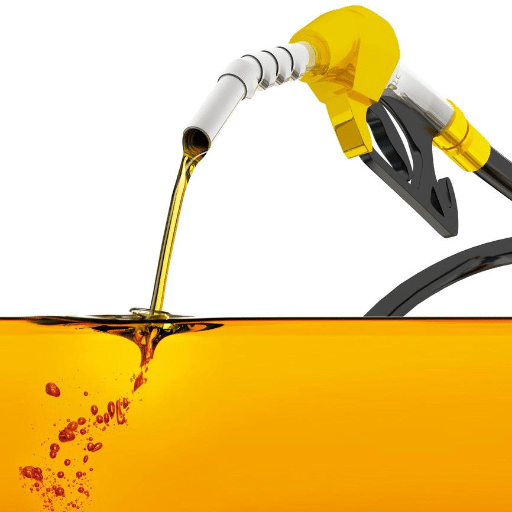
The price of gas heavily weighs on the profit of gas stations. Even though fuel selling is a principal source of income, the profit margin of fuel is frequently small because of competition and consumers’ price sensitivity. The gas price rise might pull down the consumption level as some customers would rather reduce their driving and use public transportation, which in turn might lead to a reduction in the total sales volume. On the other hand, the gas price drop usually increases consumer demand, thus the volume is increased, but not necessarily the profit. In order not to be highly affected by this variability, many gas stations turn their attention to various sources of revenue, like in-store convenience sales, where the profit margins are higher and the impact of fuel price fluctuations is lower.
How Gas Prices Affect Station Profitability
The profitability of a gas station is heavily influenced by gas prices, which are affected by dynamic market conditions and consumer behaviors. The increased price of gas is one of the reasons behind the decreased demand for fuel as consumers limit their driving and switch to cars with less fuel consumption. Even though gas stations often run on very low profits from gasoline sales—sometimes the profit per gallon is only $0.03 to $0.07—the real winner is in the indirect revenue streams. The higher the fuel prices, the lower the expenditure in the convenience stores inside the gas stations, where the profit margins might be over 30%. On the contrary, lower gas prices lead to more fuel consumption and thus more customers at the station, which might result in higher sales in-store.
Another important point is the cost of wholesale fuel, which stations have to watch carefully. Price hikes at the pump usually come after a certain delay in comparison to the rise in wholesale prices, and this leads to the shrinking of margins. Conversely, when wholesale prices go down, stations can keep their retail prices temporarily higher, thus increasing their breakeven. Moreover, regional competition and contracts with suppliers can have an impact on pricing strategies and, therefore, profitability. So, in order to stay financially healthy, a lot of gas stations are strategically diversifying their revenue sources, for instance, by selling convenience items, washing cars, or even providing foodservice, which are less volatile as compared to fuel sales.
The Relationship Between Gas Prices and Consumer Behavior
Directly and measurably, gas prices affect consumer behavior—day-to-day activities and even wider economic decisions are influenced in this way. Rising prices cause consumers to cut down on non-essential travel, take a carpool, or switch to a less fuel-consuming car, so as to reduce their expenses. On the other hand, gas prices going down can help increase driving and even cause a shift in preferences from smaller, more economical cars to larger, less fuel-efficient ones like SUVs.
Moreover, the changes in gas prices usually have an impact on the spending of consumers in other areas as well. Higher gas prices take away part of disposable income, thus spending on retail, dining, and leisure activities gets restricted. On the other side, lower gas prices release the squeezed financial resources and allow more of that in the categories mentioned. Besides, long-term behavioral changes like getting accustomed to a certain area to live, or using public transport more, can also be the consequences of the high-cost fuel periods that lasted long time. These trends clearly show how significant the role of gas prices is in determining and eventually shaping not only consumption habits but also the whole economic activity.
Strategies to Manage Gas Price Fluctuations
Switching to the above-mentioned practices will help people and companies to avoid the financial strain that comes with constant gas price changes and, therefore, allow them to have more stable consumption habits and draw closer to being economically resilient.
Adopt Fuel-Efficient Habits
Changing driving behavior can have a major effect on the entire process of gas price uncertainty. The upshot of it all is that the habits mentioned will not only give better gas mileage but also contribute indirectly to overall cost savings through regular vehicle maintenance that, at its best, would be done if costs were not a concern.
Increase Use of Public Transit and Carpooling
Adopted measures not only cut down personal fuel costs but also give a big boost to green transport. Offering such alternatives, the individuals’ costs are reduced, and, on the other hand, sustainable practices in transportation are encouraged.
Explore Alternative Fuel Options
Buying a hybrid or electric vehicle is one of the ways to combat the gas price volatility issue in the long term. The drivers of such cars have the chance to keep the gasoline prices from affecting their transportation costs by simply gradually switching to electric vehicles while the prices are probably going down.
Leverage Technology for Cost Savings
The use of applications and platforms that keep track of gas prices in real-time is a great way for consumers to always find the cheapest prices in their area. The use of technology together with efficient route planning will lead to very little fuel being wasted and a travel decision that is the most cost-effective.
Budget and Plan for Volatility
Everybody, from homes to big companies, can plan for fluctuating power prices by adding a periodical review into their financial plans, having a money-for-emergencies fund, or figuring out ways to cut down on activities that use up the most fuel. The installation of energy-efficient machinery in the operation areas can also lead to a reduction of gasoline dependency.
Maximizing Profit at Gas Stations
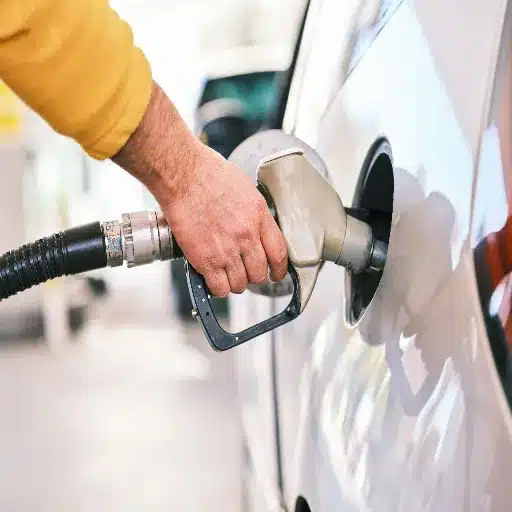
In order to achieve greater profit margins, gas station operators must prioritize revenue diversification and operational excellence. The availability of convenience store items, including but not limited to snacks, soft drinks, and commonly used household items, will greatly improve the profits. Moreover, installation of car washes or garages as complementary services will not only increase the customer value but also make the customers come back more frequently. Good inventory management, cutting down on wastage, and setting competitive prices are the strategies that secure uninterrupted profitability. The use of loyalty programs coupled with digital marketing can also create customer interaction and eventually lead to an increase in the volume of sales. Last but not least, keeping the equipment in good working condition and reducing the cost of operations will be the main factors in the continuous profit growth.
How Gas Stations Can Increase Profit
Along with increasing diversification, gas stations can also optimize their operation to earn more profits. The new and larger convenience store, containing fresh food, coffee, retail items, and so on, is a very potent source of revenue enhancement, as customers are no longer satisfied with just getting gas but also retail. If a gas station invests in an additional on-site service that is an electric vehicle (EV) charging station, it will not only attract more customers but also be ready for the next market trend. Moreover, installing point-of-sale (POS) systems and other similar technologies will help make transactions faster while at the same time decreasing the number of customers waiting, which ultimately results in a better customer experience.
Cost-efficiency is another major aspect. Making agreements with suppliers to receive fuel at lower prices and planning delivery schedules around price fluctuations could be ways to increase margins. Regular equipment maintenance would not only keep the machines running but also prevent costly repairs; besides, using energy-efficient upgrades such as LED lighting could save on operating costs. Additionally, training the employees thoroughly will result in excellent customer service and consequently customer loyalty and repeat business.
Gas stations can capture the market by employing proper strategies like online promotion using the local search engine optimization (SEO) and social media, which will increase their visibility and make people come to them. Besides, marketing that includes loyalty and discounts for app users can create strong reasons for clients to visit regularly. By combining new ideas, keeping costs down, and putting the customer first, gas stations can create a sustainable and profitable business model.
Innovations in Fuel Sales and Customer Experience
The fuel retailing sector is completely changing with the implementation of state-of-the-art technologies and customer-centric strategies. The fueling process has been made more seamless by the automated fuel dispensers that come with contactless payment options, like mobile payments and RFID technology. As a result, the time spent waiting is minimized and the customer experience is improved. Also, AI-enabled predictive analytics are applied for stock control, predicting customer needs, and pricing strategy adjustments, thus facilitating the smooth running of operations.
The combination of EV charging stations with the conventional gas station infrastructure is still another innovation that caters to the electric vehicles market that is on the rise. This shift not only brings in a new category of customers but also elevates the status of gas stations to that of complete energy hubs. Upgraded convenience stores, with healthy food choices, e-commerce pickup, and loyalty programs offering personalized discounts, make the customer experience even better, turning the gas station into a place where people can solve different needs.
Moreover, green projects like placing solar panels to generate energy or supplying biofuels are attractive to eco-friendly consumers and, at the same time, help to cut down on the costs of operation. The fuel retailers who take advantage of innovation can expect to face a hard time in the new market, but they will still be able to satisfy the demands of the contemporary inhabitant who has a wide variety of choices.
The Role of Electric Vehicles in Future Profitability
Electric vehicles (EVs) are influencing the transportation and energy industries very quickly, and at the same time, they are posing problems and giving opportunities to fuel retailers who are still expecting to be profitable in the long run. The global EV adoption is being accelerated by the combination of technologies, government incentives, and an increasing understanding of the climate change issue, which, in turn, is breaking the revenue models that were solely built on traditional fuel. The only way for fuel retailers to remain in the competition is to change by offering more services and making EV infrastructure, such as high-speed charging stations, part of their operations.
Research indicates that implementing strategic EV charging at retail locations can not only bring in profits through the attraction of EV drivers but can also lead to other indirect sales from the retail outlets, as the driver is most likely to spend something on goods or services while waiting for their vehicle to charge. Retailers will also be able to accomplish this by taking advantage of the energy generated from renewable sources, like solar panels, for the charging stations, which will also represent cutting down on costs. Besides, collaboration with electric vehicle makers and charging communities based on subscriptions will add more revenue streams to their basket. By not only adjusting but also being proactive in shifting with changing consumer preferences and adopting a sustainability-driven approach, the businesses can secure their future while being part of the transition to a low-carbon economy.
The Future of Gas Stations in the Automobile Era
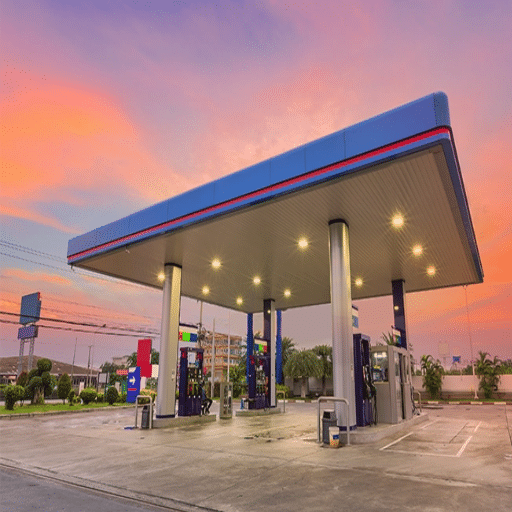
The transition of gas stations during the automotive era will largely be through the diversification of their services and the adaptation to the changing scenarios in the industry. With the increasing acceptance of electric vehicles, gas stations will have to offer charging facilities for electric vehicles to keep themselves in the race. Thus, their integration with fast-charging stations and ensuring compatibility with a wide range of EVs will be their main areas of focus.
Moreover, they may turn their future gas stations into multifunctional centers that will include convenience retailing, food servicing, and package delivery to be more profitable and draw more customers. Moreover, the implementation of earth-friendly technologies like the solar power system will also help to achieve the station’s aims for sustainable development that corresponds to the world’s environmental aspirations.
Therefore, the power to change according to the new consumer preferences and technology will be the decisive factor for the gas stations in the automotive industry’s transformation regarding their roles and importance.
The impact of automobiles on gasoline sales
The relationship between cars and gasoline sales is complex, and it has changed a lot over time. In the past, gasoline sales were closely linked to the increase in car ownership and use, as internal combustion engine vehicles (ICEVs) were the only ones in the market. However, recent changes in the auto industry and customer demands are cutting the trend. The rising number of electric vehicles (EVs), hybrid cars, and changes in the regulations regarding fuel efficiency have slowly reduced gasoline consumption. Besides, the push for greener energies and global environmental regulations is helping the transition away from traditional fuels. Moreover, urbanization, together with the advent of ridesharing and enhanced public transit, is leading to reduced reliance on private cars and, consequently, lower gasoline sales. The gasoline retailers, therefore, need to change their strategies by going into other businesses to lessen the impact of the falling fuel demand on their operations.
Adapting to Changing Fuel Demand
In reaction to the fluctuating fuel demand, I will work on the diversification of our income sources by introducing alternative energy solutions, for instance, the installation of electric vehicle charging stations, to our offerings. Also, I will consider partnership with local businesses, expansion of convenience stores, and providing maintenance services as non-fuel revenue opportunities. Keeping close watch on market trends and being flexible, I will be able to make sure that the company is able to survive the rapidly changing energy scenario.
Innovations in Gas Station Profitability
To solve the queries and to extract major takeaways, the mentioned actions show that the gas stations will find a way to enhance their profitability through the application of the following innovative methods:
Sales of Non-Fuel Products: Maximizing the income coming from non-fuel sources is one of the most important things to do to cope with the fuel industry, which is being squeezed more and more. Among the strategies, one can find increasing the sales of the convenience store by stocking it with high-margin products like snacks, refreshments, and ready meals to attract customers to spend more. The retailing of premium or niche products, for example, organic snacks, craft drinks, and locally made goods, can win over different customer groups as well.
Taking a step forward with EV Infrastructure: The growing popularity of electric cars means that the placement of EV charging stations will not only bring immediate returns, but at the same time, the station will be able to attract a different group of clientele. Charging vehicles quickly or cooperating with car manufacturers can contribute to making the station stand out and winning market share.
Operations Based on Data: The use of technology for understanding consumer behavior and better controlling the stocks can be a very effective way of increasing the company’s profit. Various ways, such as sales systems, consumer loyalty initiatives, or the use of analytics applied to customer data, make it possible to create promotions for specific customers and change the stocks according to the consumers’ favorites, thus wasting less and selling more.
Extra Services: Installation of automated car washes and offering minor car maintenance, such as oil changing and replacement of windshield wipers, as well as package pick-up/drop-off points, are some of the additional services that can be offered, which will increase the customer’s interest in coming to the gas station more often, thus increasing the overall revenue of the gas station.
Green Practices: Going green through the use of renewable energy sources, such as installing solar panels or using energy-efficient lighting, not only helps to cut down on expenses but also contributes to the company’s good image as a responsible green company. This, in turn, brings in the eco-conscious clientele and facilitates the green operations over a long period of time.
Employing these tactics and being flexible to the market trends, gas stations will be able to harvest the fruits of profitable growth while at the same time transitioning to satisfy the requirements of a rapidly changing energy scene.
Reference Sources
Biogas Perspectives in the Livestock Sector in Brazil and the United States
Fuel Cell Electric Vehicles (FCEV): Policy Advances to Enhance Commercial Success
Optimizing Number and Locations of Alternative-Fuel Stations Using a Multi-Criteria Approach
Frequently Asked Questions (FAQs)
How much profit does a gas station make on a gallon of gas?
The profit made on a gallon of gas at a gas station can range quite a bit, but it is usually between 10 and 20 cents per gallon. This small profit is due to the crude oil price, supply and demand, and competition in the area. A gas station has to get fuel at a wholesale price, which is determined by the overall market price of gasoline, and that can have quite a big impact on the profitability of the station.
What is the average gas station profit margin?
Fuel sales at gas stations have a very low average profit margin, which is usually somewhere around 3 to 5 percent. On the other hand, in-store sales of items like snacks, drinks, and other products with much higher profit margins are mainly the source of a gas station’s profit. Although the margin on fuel sales is low, a gas station can still make a lot of money if the various sales (like food, drinks, and retail items) are done properly.
How much do gas stations make from convenience store sales?
Gas stations can increase profit significantly just from convenience store sales, which often have profit margins of 30 to 50 percent. This indicates that even though sales of gas contribute very little to the profit, the income from sales of food, drinks, and other items can considerably improve the financial performance of the gas station as a whole.
What influences gas prices at the pump?
Several factors, such as the cost of crude oil, refining costs, and market demand, determine the price of gas at the pump. In addition to this, taxes and local competition may have a significant impact on the price per gallon. When the cost of gas goes down, gas stations might choose to follow a different pricing strategy that is still competitive, but at the same time, they are aiming to keep the profit margin.
How do gas stations optimize fuel pricing?
Gas stations optimize fuel pricing by constantly watching market trends and competing prices and setting their own prices according to local demand and the cost of fuel. By employing cost control measures and having good communication with suppliers, the gas stations can make sure that they are not only competitive but also able to make the most of their profit margins.
How can gas stations attract more customers?
There are many ways for gas stations to compete with each other in terms of pricing and to attract more customers. The other alternatives are offering loyalty programs and running promotions that cut prices on fuel and convenience store items. Also, a gas station that is clean and looks nice to customers, along with quality service, may create a loyal customer base that frequently visits the place, and eventually, revenue will be increased for the station.
What role do electric vehicles play in gas station profitability?
The increasing number of electric vehicles is seen as a threat to the profitability of gas stations, as it is very likely that there will be fewer people using gasoline in the future. Nonetheless, there are some gas stations that are taking the plunge and providing EV chargers alongside their traditional gas pumps, which can not only be an extra source of income but also a way for them to remain part of the changing market.
What are the main challenges that gas stations face?
Gas stations are dealing with many challenges, such as unstable fuel prices, small profits on sales of fuel, and they are getting increasingly competitive from other fuel suppliers and convenience stores. Moreover, it is very important to be regulatory-compliant and operate efficiently to keep making profits in such a competitive market.

